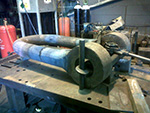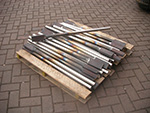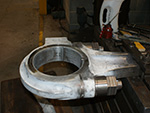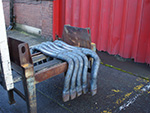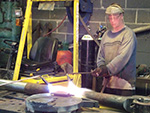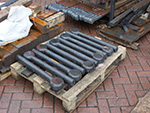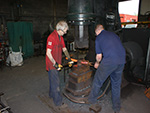Steel Forging | Hot Forming | Cold Forming
We do
- Open Die, Hammer or Smith Forging
- Drop forging.(closed die)
- Press forging
- Upset forging
- Roll forging
- Swaging
Work With
- All Steel Types including Carbon, Alloy and Stainless
- Aluminum Silicon Bronze
- Bronze
Worked for
- Components for the Oil Related Industry
- Automotive Industry
- Transportation Industry
- Ship Building Industry
- Heavy Plant Engineering Industry
- Vehicle Springs
- Steel Works Equipment
Worked On
- Anti-Roll Bars
- Automotive Leaf Springs
- Box Tongs upto 12 inches
- Bracket Work
- Davit Arms
- Engineering Parts and Repairs
- Engineering Requirements - Bolts (Off Standard)
- Forge Test Pieces
- Heat Exchanger Fabrication
- Jominy Test Pieces
- Main Leafs for Locomotives
- Open Die Forging
- Prototypes and Small Production Runs
- Shackles up to 40Kg
- Special Hooks
- Sporting Gun Parts (barrels - chop a lump)
- Torsion Bars
- more ...
Hammer Forging
Our long list of clients include:
- British Waterways
- Bridon International
- C F Booth Engineering Ltd
- Europa Engineering
- Firth Rixson Super Alloys
- MAN Diesel Ltd
- MBH Analytical Ltd
- MSI Quality Forgings
- National Railway Museum
- National Railways
- OutoKumpu Stainless Ltd
- Rotherham Metropolitan Borough Council
- Sheffield Hallam University
- Tata Steels
- Tinsley Bridge Ltd
- Wavin Pipeline Services
- William Cook
- many more ...

